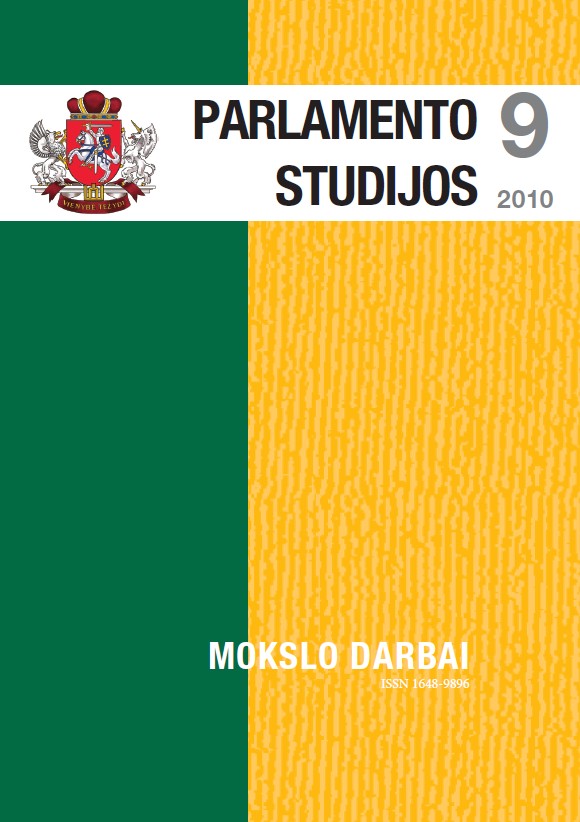Partinių sistemų stabilumo samprata ir matavimas: Lietuvos situacija 1990-2010 metais
DOI:
https://doi.org/10.51740/ps.vi9.320Reikšminiai žodžiai:
partinė sistema ir jos stabilumas, rinkėjų elgsenos kaitumas, partijų pakeitimas, fragmentacija, ideologinis atstumas, reikšminga partija, poliarizacija, antisisteminė partija, konkurencija dėl vyriausybės vietųSantrauka
Straipsnyje analizuojamas Lietuvos partinės sistemos stabilumas 1990-2010 metais trijuose lygmenyse: rinkimų, parlamento ir vyriausybės. Matuojant šį reiškinį remiamasi Mogenso N. Pederseno, Peterio Mairo ir Giovannio Sartorio suformuotais tyrimo instrumentais, įvertinant jų trūkumus ir patobulinant. Daroma išvada, kad ilgainiui Lietuvos partinė sistema tapo nestabili visuose lygmenyse. Pirma, aukštas rinkimų nestabilumas pastebimas per visą 1990-2010 m. laikotarpį. Antra, Lietuvos partinėje sistemoje taip ir nepavyko įsitvirtinti nuosaikaus daugiapartizmo tipui. Trečia, konkurencijos dėl vyriausybės vietų struktūra po 2000 m. tapo visiškai destabilizuota. Be to, straipsnyje patvirtinama, kad partinės sistemos stabilumas yra daugiadimensinis reiškinys.








 Lietuvos nacionalinės Martyno Mažvydo bibliotekos mokslo žurnalų ir leidinių metaduomenys yra platinami pagal
Lietuvos nacionalinės Martyno Mažvydo bibliotekos mokslo žurnalų ir leidinių metaduomenys yra platinami pagal 